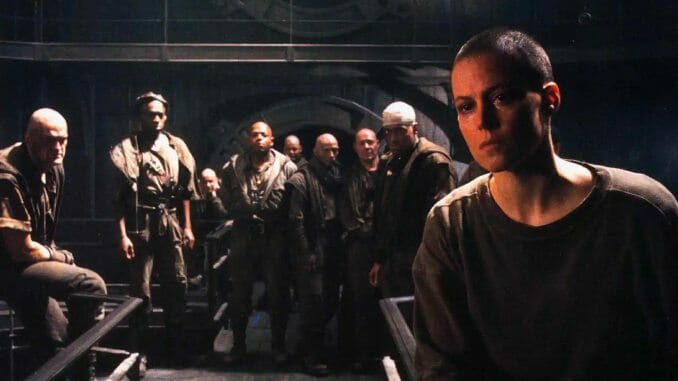Alien 3 Was a Blockbuster Franchise Turning Point 30 Years Ago

Alien 3 doesn’t waste any time letting you know what it is. Sure, the teaser trailer was notoriously misleading, with an Earth-centric sell suggesting that the 20th Century Fox marketing department either misunderstood what the movie was about, or made their own mercenary best guess based on what they hoped the filmmakers would deliver. But as the movie itself begins, it’s pretty clear what director David Fincher did deliver, regardless of the rewrites, studio demands and crashed schedules that muddied its production. Dread and foreboding percolate from the jump, as the opening credits intercut with snippets of impending disaster on the ship holding the three cryo-slumbering survivors of Aliens. Tentacles unfurl. Glass cracks. Drips of acid burn. Fires flare, and the intensely satisfying resolution of the previous movie burns up. By the time the ship has crashed on a prison planet, only Ripley (Sigourney Weaver) is still alive. Hicks, the android Bishop and, most heartbreakingly, Ripley’s surrogate daughter Newt are all gone.
Seeing this opening at eleven years old felt like I was receiving a transmission from a darker, more ominous place; the previous movie I saw in theaters before my dad toted me off to Alien 3 was FernGully: The Last Rainforest. For longer-time fans of the horror classic that slowly gestated into a franchise, undoing the victories of the previous film felt cruel—ticking characters off a list while ticking audiences off at the same time. Despite Fincher’s subsequent reputation as a purveyor of bleakness, this cruelty probably can’t be attributed to him; Alien 3 went through a variety of concepts, drafts and tinkerings during its protracted development, with a number of ideas supposedly pieced together into the fussed-over-yet-rushed final film. By most accounts, permanently offing Newt and Hicks (Bishop makes a brief, grim return later in the film) was not something Fincher introduced at the eleventh hour.
It’s also not ultimately the problem with Alien 3. It’s not fun knowing that Hicks and Newt are goners, but Fincher’s film returns the series to its horror roots, and introduces a fascinating dynamic that would be impossible with more returning characters in the picture. Ripley finds herself marooned on a prison planet, amidst a group of male convicts who have refashioned themselves as a monkish religious order, laboring toward redemption in relative isolation. The group is tested by Ripley’s unwanted passenger: Yet another respawn of the alien creature, this one gestated in a prisoner’s pet. (Fincher, ever the crowdpleaser, intercuts the autopsy of a young girl with the gorey demise of a dog.) The makeshift foxhole camaraderie of Aliens has been replaced with something more dour and hopeless.
That hopelessness is also what makes Alien 3 so memorable, both as a visual experience and as a final-yet-not-final chapter in Ripley’s sad story. Though it has a reputation as a failed try-out movie for Fincher (including from Fincher himself, who has disowned it), the pulpy despair, full of fog, grime and monochromatic shadows, isn’t so different from Se7en, a movie whose existential despair has more than a tinge of stylized slasher extremity. As downbeat as much of the movie is—Ripley can’t have so much as a momentary sex partner without him revealing a haunting past and then quickly getting his skull punctured by an alien—there’s also a kind of theatrical, borderline Terry Gilliamesque grotesquerie to its cast of condemned men who mostly speak with mellifluous British accents. Even better: Charles S. Dutton, commanding and electric as a particularly vocal spiritual leader of sorts who becomes one of Ripley’s strongest allies as she faces challenging decisions.
-

-

-

-

-

-

-

-

-

-

-

-

-

-

-

-

-

-

-

-

-

-

-

-

-

-

-

-

-

-

-

-

-

-

-

-

-

-

-

-








































